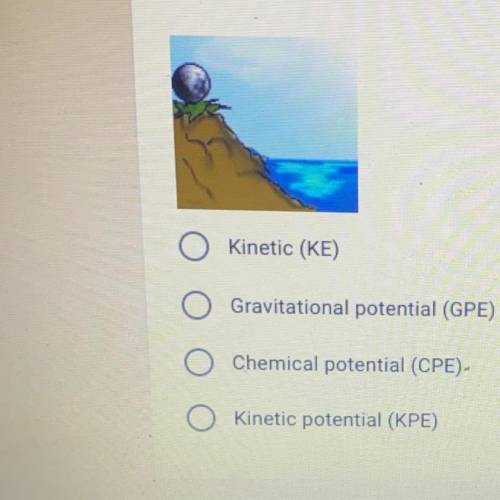2. Which form of energy is shown in the picture of the boulder at the top of the hill? *
...

Biology, 08.03.2021 03:30 michellemonroe012305
2. Which form of energy is shown in the picture of the boulder at the top of the hill? *


Answers: 1


Other questions on the subject: Biology

Biology, 20.06.2019 18:02, mazielynn84
You hate the smell of mercaptoethanol. since there are no disulfide bonds in intracellular proteins, you have convinced yourself that it is not necessary to treat a cytoplasmic homogenate with mercaptoethanol prior to sds-page. you heat a sample of your homogenate in sds and subject it to electrophoresis. much to your surprise, your gel looks horrible; it is an ugly smear! you show your results to your friend who is a chemistry major, and she suggests that you treat your sample with n-ethylmaleimide (nem), which reacts with free sulfhydryls. you run another sample of your cytoplasmic homogenate after treatment with nem and sds. now the gel looks perfect! if intracellular proteins don't have disulfide bonds (and they don't) why didn't your original scheme work? and how does treatment with nem correct the problem?
Answers: 1


Biology, 22.06.2019 11:00, ryrytkg5107
Use the above pedigree for questions 1,2, and 3 1. what kind of genetic disorder is represented in the pedigree? a. recessive b. dominate refer to the pedigree in question 1. 2. is the mutated gene in this disorder located on a sex chromosome (x or y) or an autosome? a. sex chromosome b. autosome refer to the pedigree in question 1. 3. which generation has individuals that you are certain are heterozygous for the mutated gene? a. generation 1 b. generation 2 c. generation 3
Answers: 2

Biology, 22.06.2019 13:20, abolton04
Imagine a self-reactive t cell that has not undergone clonal deletion in the thymus (that is to say, it has escaped central tolerance). if it encounters self antigen in the absence of an infection or inflammation, what will happen to this self-reactive t cell? (select two answers) (a) the t cell undergoes clonal expansion. (b) the t cell gains effector functions. (c) the t cell undergoes apoptosis. (d) the t cell becomes activated. (e) the t cell becomes anergic.
Answers: 1
You know the right answer?
Questions in other subjects:

Mathematics, 27.02.2021 09:00

History, 27.02.2021 09:00

Mathematics, 27.02.2021 09:00

Mathematics, 27.02.2021 09:00


Physics, 27.02.2021 09:00

Mathematics, 27.02.2021 09:00

Health, 27.02.2021 09:00

Chemistry, 27.02.2021 09:00



